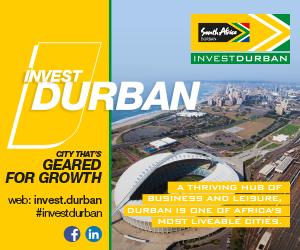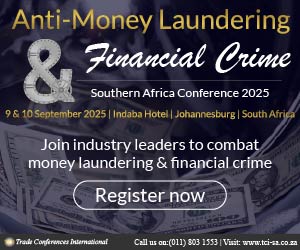
Opinion in government and civil society has been turning sharply against fossil fuels for several years. Successive international conferences have been setting global targets for weaning economies off coal and oil, but Russia’s invasion of Ukraine has changed that. Rich countries are bringing coal plants back on stream and nuclear plans have been reactivated.
With Mpumalanga’s economy being so strongly geared towards coal (in mining and for energy generation), this trend has significant implications for regional planning in the short term. More than 80% of South Africa’s coal is currently sourced in Mpumalanga and it is the third-largest coal-producing region in the world.
However, the province is not ‘sitting on its laurels’. Nor is it imagining that it can stop the world. Rather, the Provincial Government of Mpumalanga has established the Mpumalanga Green Cluster Agency to bring together government, academia and industry to create the environment for businesses to develop in a green economy.
The agency has already published a series of market intelligence opportunity briefs to highlight current opportunities for investors, such as: carbon capture, cleaner aviation fuel, energy storage and green hydrogen.
The key working groups show the agency’s focus: sustainable agriculture, circular economy, energy and water. One of the tasks is to transition to a new economy in a way which creates jobs.
The Cluster, an initiative of the Mpumalanga Department of Economic Development and Tourism with the support of GreenCape and the Deutsche Gesellschaft für Internationale Zusammenarbeit (GIZ), has joined the International Cleantech Network, a group that has 15 000 businesses affiliated to it across the globe.
National utility Eskom is also moving into the new era, partly through a process whereby the entity will be broken into three more competitive units, but more immediately through the announcement in July 2022 of 18 winnings bids from independent power producers (IPPs) for renewable projects on Eskom land, 4 000 ha of which the utility has made available for this first phase. Eskom owns 36 000 ha in the province. A total of 1 800 MW will become available to the grid and it will be cheaper to transmit because the solar or wind plants will be right next to the existing Eskom transmission lines.
Ten coal plants are due to be closed by 2040, with four Mpumalanga plants (Hendrina, Grootvlei, Camden and Komati) first in line.
Eskom is undertaking studies to assess the potential impact on local communities of these closures. Options to get these plants producing energy again include gas, biomass and hydrogen but it is possible they might be used for something quite different. Eskom wants to be a net-zero company by 2050.
Another major player in the energy market in Mpumalanga (and the world), Sasol, has announced plans to start producing 1 200 MW of renewable energy by 2030. An integrated oil, gas and chemicals company with more than 30 000 employees and operations in 31 countries, Sasol runs several plants at Secunda. Products manufactured at the complex include synthetic fuel, petroleum, paraffin, jet fuel, creosote, bitumen, diesel and lubricants. The primary feedstock for synthetic-fuel production is coal, and the plant is in the heart of Mpumalanga’s coalfields.
Sasol regularly spends tens of millions on upgrades and improvements at the complex. The Sasol Synfuels refinery is the only commercial coal-to-liquid fuel plant in the world and constitutes a key component in South Africa’s oil and gas sector.
National government’s Renewable Energy Independent Power Producer Procurement Programme (REIPPPP) has seen the investment into this totally new sector of more than R200-billion since 2012 and South Africa is now home to 112 IPPs, whereas just 12 years ago there were fewer than 40 in Sub-Saharan Africa.
The relaxation by national government of the rules regarding setting up a power plant of 100 MW or less is well suited to the requirements of big timber-processing companies such as Sappi and PG Bison and all the large mining concerns that are active in Mpumalanga.
Investment options
Several infrastructure investment projects in the tourism sector have been put forward by the Mpumalanga Economic Growth Agency (MEGA). There is a special focus on BRICS countries and the province was glad to welcome the announcement of a new flight into Kruger Mpumalanga International Airport in 2022 by the tourist division of Lufthansa, Eurowings Discover. The TRILAND partnership with Eswatini and Mozambique is another avenue, as is the collaboration with KwaZulu-Natal, Eswatini, Mozambique and the Seychelles. The latter project is called east3ROUTE Tourism Initiative and proclaims “Experience, Adventure, Scenery and Trade” between the participating provinces and countries.
MEGA is an equity investor in a number of Mpumalanga concerns, including Afrimat, Highveld Fruit Packers, Kangwane Anthracite, Loopspruit Winery and Tekwane Lemon Farm.

In the Nkangala District Municipality, a public-private partnership is due to deliver a hotel and conference centre in the town of Middelburg in the Steve Tshwete Local Municipality.
It may seem ironic that R350-million is to be spent on a Radisson-branded hotel in the aftermath of Covid-19 but conferences and tourism will return. Elsewhere, mining and timber companies are making large investments in increased production or in extending the life of mines.
A major concern for provincial planners is to diversify the economy and to grow the manufacturing sector.
The Mpumalanga Economic Growth and Development Path (MEGDP) identifies beneficiation, agro-processing and the development of value chains as priorities.
Various industrial parks are planned which will focus on agriculture and forestry, mining and metals and petrochemicals. An International Fresh Produce Market in Nelspruit and the planned Nkomazi SEZ (Special Economic Zone) are other priorities.
Steel and associated manufacturing remains one of the province’s strong suits and Mpumalanga has rich and varied mineral resources and fertile soil that support diverse farming operations, agro-processing and forestry. The province also hosts large companies in the manufacturing sector such as Middelburg Ferrochrome and the Manganese Metal Company.
The province’s rich agricultural produce is used by companies such as McCain, Nestlé and PepsiCo and there are also pulp and paper plants (Sappi and Mondi), with PG Bison set to start producing more than 1000 m³/d per annum at its Mkhondo particleboard plant after two investment injections of R600-million (on a press and forming line) and R560-million (on a front-end dryer).
York Timbers is another forestry company and the sugar mills and refinery of RCL Foods (formerly TSB Sugar) along with fertiliser facilities and textile manufacturing concerns are all contributors to the provincial economy.
The southern half of the eastern limb of the platinum-rich Bushveld Igneous Complex runs south towards the towns of Lydenburg and Machadodorp. Deposits of chromite, magnetite and vanadium in this area are the basis of the ferro-alloy complex in Witbank-Middelburg and Lydenburg.
The town of eMalahleni is the centre of the coal industry. Other minerals found in the province include gold, platinum-group minerals, chromite, zinc, cobalt, copper, iron and manganese.
Middelburg is home to Columbus Stainless, South Africa’s only producer of stainless steel, and several big engineering works. It is about 130km from Pretoria and less than three hours’ drive from the Malelane Gate of the Kruger National Park.
Visits to game reserves and nature reserves have shown signs of recovery from the lockdowns associated with Covid-19 but for a province where 7% of GDP is derived from tourism, the recovery can’t come soon enough.
The Kruger National Park remains the province’s most visited asset but the decision by UNESCO to afford World Heritage Site status to the Makhonjwa Mountains near Barberton will boost geological tourism to the province and supports the efforts of the province to diversify its offerings. Major projects to improve tourist experiences are underway at the Graskop Gorge (where a transparent lift takes tourists into the depths of the gorge), a Skywalk is to be built at God’s Window and a cable car is planned for Three Rondavels.
The international body’s decision has also had the effect of expanding the curriculum at the relatively new University of Mpumalanga. On the basis of the UNESCO ruling, UMP has a new offering in geology as part of a BSc degree.








